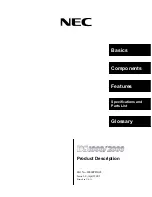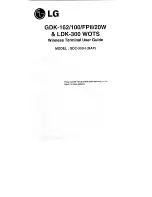
24
2.4
Connecting a Door Phone
A door phone can be connected to the system using one of the analogue
extensions and the two system relay ports. The first relay is used to provide a
speech path between the door phone and the internal extension to which it is
connected. The second relay is used to activate the door locking mechanism.
The door phone unit is made up of two elements - a handsfree audio unit with
speaker and microphone (this has the same electrical properties as an off-hook
analogue phone) and a push to close button-operated switch, all housed within a
metal casing.
When the door phone button is pressed, the system will operate relay 1 w hich
connects the door phone audio unit to the extension port and rings the extensions
that are programmed to ring for the door phone. When an extension answers, it is
connected to the door phone. The user then has the option of opening the door by
dialling a code - or by pressing a key in the case of a system phone.
Wiring the Door Phone Switch -
The two contacts of the door phone switch have to be wired to the
a
and
b
contacts of the analogue extension port being used for the door phone (see
diagram below).
Wiring connections for the door phone -
Note
: The relay contacts are normally open.
Wiring the Audio Unit -
Connect one contact of the audio unit to the
a
contact of the door phone extension
and the other to one of the contacts of Relay 1. Connect a link wire between the
b
connection of the door phone and the second contact of Relay 1. (See connection
diagram above and Table 2).
Door Phone Control Unit
Handsfree
Audio unit
Door phone
switch
Analogue
extension port
to which
door phone
is connected,
e.g.21
Relays for
door phone
operation
RL1
RL2
b
a
















































